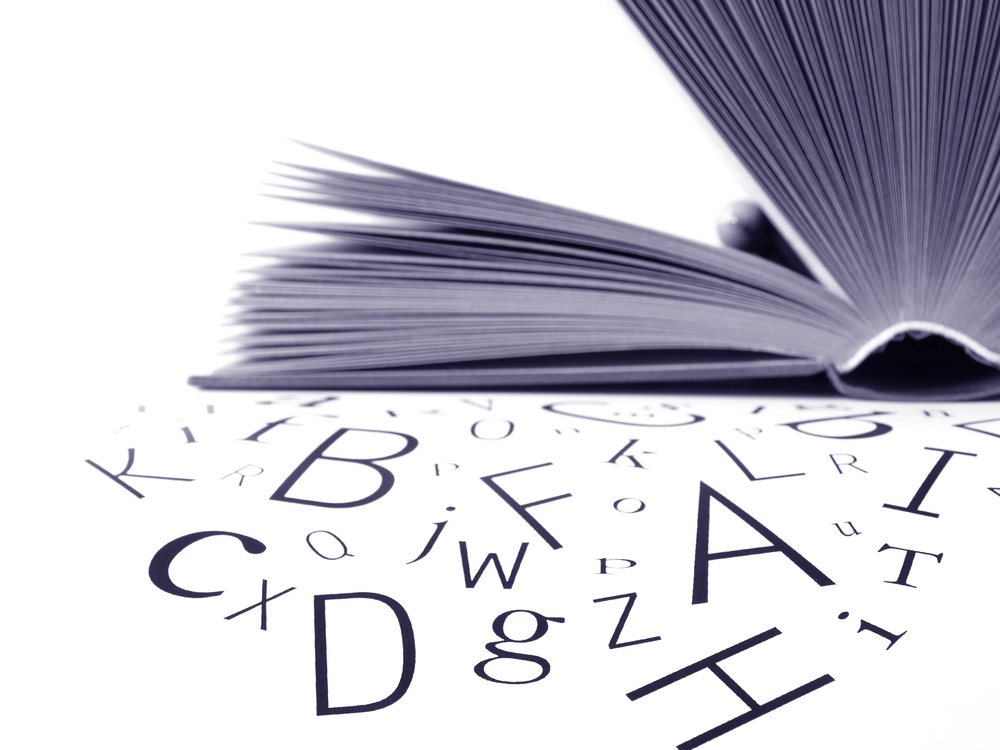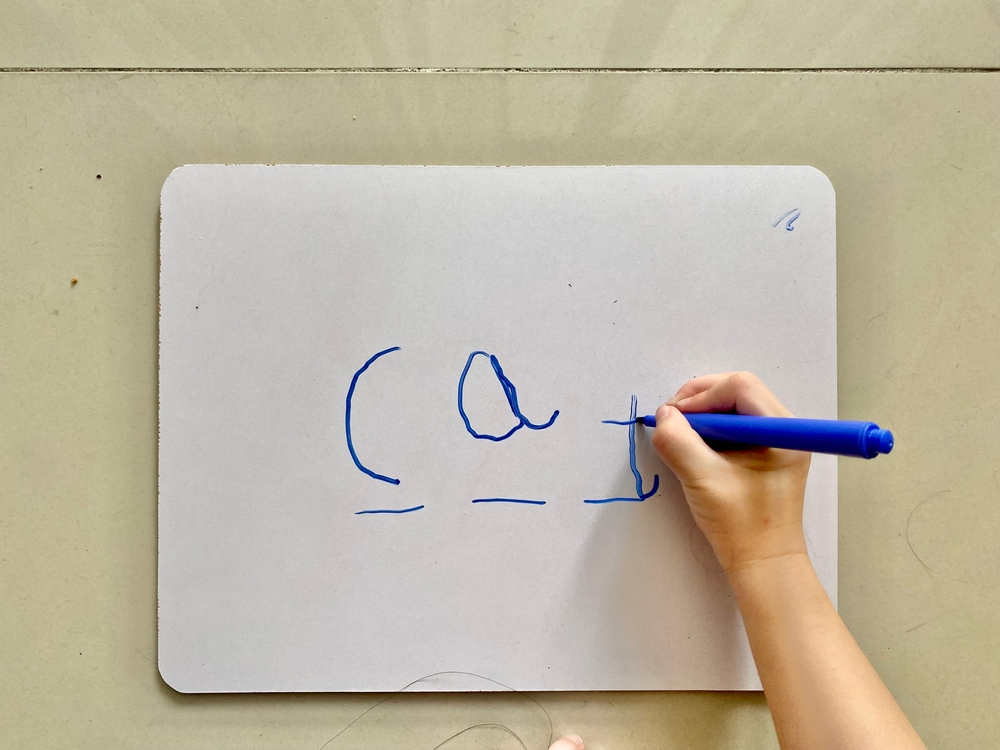
Dyslexia, often misunderstood, is a widespread learning disability affecting one in five individuals worldwide. It’s a term that has seen numerous definitions but fundamentally, it describes a distinct learning difficulty that primarily impacts the skills required for accurate and fluent reading and spelling. Although it’s often associated with educational difficulties, it’s essential to understand dyslexia is not a reflection of a person’s intelligence.
Phonological Awareness and Dyslexia
One key feature of dyslexia is the difficulty with phonological awareness, which involves the recognition and manipulation of sounds in spoken words. This critical aspect of reading involves understanding the way words are made up of individual sounds, also known as ‘phonemes’. People with dyslexia often struggle to identify and work with these phonemes, which is a crucial step in developing reading skills.
Verbal Memory and Processing Speed
In addition to a lack of phonological awareness, dyslexics may also experience issues with their verbal memory and verbal processing speed. Verbal memory involves remembering and recalling information communicated verbally, while verbal processing speed refers to the time it takes for an individual to process, understand, and respond to verbal information. In the context of reading, this slow processing speed could lead to difficulties in swiftly recognizing and interpreting words.
The Spectrum of Dyslexia
It’s important to stress that dyslexia is not a discrete, clear-cut category. Instead, it lies on a continuum with varying degrees of severity. This means there’s no such thing as a ‘typical’ dyslexic – some might struggle with spelling but read fluently, while others might find it difficult to read out loud yet have no issues with writing.
Co-occurring Difficulties of Dyslexia
Individuals with dyslexia may also experience co-occurring difficulties in aspects of language, motor coordination, mental calculation, concentration, and personal organization. However, these should not be considered as markers of dyslexia but rather, potential additional challenges that a dyslexic individual might face.
The Impact of Dyslexia on Reading Comprehension
Phonological processing refers to the ability to recognize and use sound structures of a language. It plays a pivotal role in reading as it allows the reader to use their understanding of phonemes to decode words. However, dyslexia often comes with an impairment in this area.
Learners with dyslexia often struggle with phonological processing, leading to difficulty in identifying and manipulating sounds in speech. Consequently, the ability to connect sounds with letters or groups of letters is hindered. This affects their reading performance directly, as they may struggle to correctly sound out words. Phonological processing deficits in dyslexics manifest as difficulties in rhyming words, blending sounds to form words, and segmenting words into individual sounds.
Effect of Dyslexia on Memory
Memory plays a crucial role in the reading process, particularly the working memory, which temporarily holds and manipulates auditory and visual-spatial information. This type of memory is essential to understand and remember what’s being read. However, dyslexia often leads to weakness in working memory.
Weak working memory in dyslexics can lead to difficulties in remembering words or sentence structures long enough to understand their meaning. Picture a scenario where you’re reading a sentence and you cannot remember the beginning of the sentence by the time you get to the end. This is the struggle faced by many dyslexics, which significantly impacts their reading comprehension.
Dyslexia’s Impact on Reading Comprehension
Reading comprehension refers to the ability to understand, interpret and derive meaningful insights from written words. The relationship between dyslexia and reading comprehension is complex, as dyslexia affects this skill in various ways.
Dyslexic learners often have problems with word recognition, reading rate, and phonological decoding, all of which are critical for comprehension. Furthermore, dyslexics commonly display slower reading speed, which impacts their comprehension as some meanings may be derived from the flow of the sentence or passage, which is lost if read slowly or in a disjointed manner.
Moreover, dyslexics may focus solely on decoding words, causing an inordinate amount of cognitive load on this process. This leaves less mental capacity for understanding content, resulting in lower comprehension. It’s like trying to understand the plot of a movie while struggling to hear the dialogues; the experience is fragmented and understanding is limited.
Furthermore, the issues with reading and spelling can also lead to low self-confidence and motivation, which indirectly impact reading comprehension.

Dyslexia and Reading Comprehension: A Complex Interaction
To understand the complex relationship between dyslexia and reading comprehension, it’s essential first to delve deeper into the fundamental elements dyslexia affects: phonological processing and working memory.
Understanding Phonological Processing in Dyslexia
Phonological processing is a fundamental skill for reading fluently. It involves the recognition and interpretation of sounds in language, specifically, the ability to identify and manipulate the individual speech sounds known as phonemes. In the case of dyslexia, phonological processing is often impaired, which impacts the capacity to read words accurately and fluently, directly influencing reading comprehension.
For instance, learners with dyslexia might struggle to differentiate similar-sounding phonemes, which can lead to errors in word recognition. They may also have difficulty breaking words down into individual phonemes, a skill known as phonemic segmentation, which is essential for understanding the structure of words and the language as a whole. These difficulties can hinder comprehension, as the reader might misinterpret or miss crucial words while reading.
The Role of Working Memory in Dyslexia and Reading Comprehension
Working memory is another key player in the relationship between dyslexia and reading comprehension. It retains and manipulates temporary information necessary for language comprehension, problem-solving and learning. Working memory allows the reader to retain information from the start of a sentence until the end, facilitating the understanding of sentence structure, identifying relationships between words, and interpreting meaning.
However, many dyslexic individuals have been found to have weaker working memory capacity. This means they may have difficulty remembering words and sentences they have just read, which complicates sentence and paragraph comprehension. Therefore, even if they decode words correctly, if the information is not held in memory, the overall meaning can be lost.
The Snowball Effect: From Phonological Processing and Memory to Reading Comprehension
Impairments in phonological processing and working memory contribute to a ‘snowball effect’ that results in increased difficulties in reading comprehension for dyslexic individuals. Misinterpretation or missing of words due to phonological processing issues are exacerbated when weak working memory cannot retain the overall message of the reading passage.
The reader may spend significant cognitive resources on decoding words that they lack the resources required to understand the meaning or context of what they’re reading. Ultimately, the combination of these factors leads to a significant struggle with reading comprehension for individuals with dyslexia.
Understanding the interplay between dyslexia, phonological processing, working memory, and reading comprehension is crucial for developing effective strategies to support individuals with dyslexia. By adjusting teaching and learning methods to accommodate these challenges, educational outcomes can be improved for dyslexic learners, allowing them to better understand and interact with the world around them.
Understanding the Relationship between Dyslexia and Spelling
Dyslexia’s influence on a person’s spelling ability is an intricate and multifaceted subject, deeply rooted in the core characteristics of the condition itself. It’s important to recognize that dyslexia, as a primarily language-based learning disability, can significantly impede a learner’s capacity to spell correctly. Let’s delve deeper into how dyslexia can impact the spelling process, drawing on key insights from established research studies and academic literature.
The Role of Phonological Processing
The capacity to spell words correctly is intrinsically linked to an aspect of language processing known as phonological awareness. Essentially, phonological awareness involves the understanding that words are composed of smaller units of sound, dubbed phonemes. Learners with dyslexia commonly exhibit difficulties with phonological processing, which contributes to their struggles with spelling.
Misspellings often arise when a dyslexic learner has difficulty separating or manipulating the sounds within words. For instance, the learner may struggle to discern the discrete phonemes in a word like “strap”, leading to spelling errors.
Sight Words and Irregularities in English Spelling
English spelling presents an additional layer of complexity due to its many irregularities. The language is replete with sight words — words that do not adhere to regular phonetic patterns and therefore must be learned and recognized as whole units.
Consider the word “would”. Phonetically, it doesn’t correspond to the sounds represented by its letters, making it difficult for dyslexic learners to spell using phonemic strategies. Sight words like these tend to pose a significant challenge for dyslexic learners.
Memory Constraints in Dyslexia
Another factor influencing dyslexics’ spelling abilities is the common difficulty with working memory, the process used to temporarily store and manage information. Dyslexics may struggle to hold a sequence of letters in their mind while attempting to spell a word, leading to transpositions, omissions, or additions.
The Influence of Motor Skills
While it’s less commonly discussed, motor coordination has a role to play in the spelling difficulties seen in dyslexics. Fine motor skills are necessary for the physical act of writing. If dyslexic learners have motor skill deficits, it could further complicate the spelling process.
Addressing Spelling Concerns for Dyslexic Learners
Aided by the strategies outlined in the main article, dyslexic learners can overcome their inherent spelling difficulties. Key to this is the creation of a supportive, immersive, and compassionate learning environment that adopts a multisensory teaching approach and promotes frequent practice and exposure to words.
Understanding the relationship between dyslexia and spelling necessitates a thorough appreciation of the nature and complexity of dyslexia as a condition, as well as an acknowledgment of the irregularities and challenges inherent in English spelling.

Dyslexia and Reading Comprehension: A Deeper Insight
Dyslexia, by nature, poses significant challenges to the process of reading comprehension. Understanding the specific ways in which dyslexia affects the comprehension process is vital in designing effective strategies to aid learners and enhance their reading skills. Some of the core issues dyslexic individuals encounter in relation to reading comprehension include troubles with decoding, vocabulary acquisition, and working memory.
Decoding Difficulties: A Major Obstacle to Comprehension
Decoding, the ability to interpret and assign meaning to letters and words, is a fundamental aspect of reading. Dyslexic learners often struggle with this process, which in turn affects their comprehension abilities. Decoding not only involves recognizing letters and words but also interpreting and understanding the associations and nuances that they carry. This intricate process demands significant cognitive resources, which can prove particularly challenging for those with dyslexia. As a result, dyslexic learners may not fully grasp the meaning of the text they read, impeding their comprehension skills significantly.
The Role of Vocabulary Acquisition
Another critical aspect that influences reading comprehension is vocabulary acquisition. Dyslexic learners often struggle with learning new words and their meanings. This difficulty results from the interconnected issues related to decoding and memorizing the visual representation of words. As a result, dyslexic learners often have a smaller vocabulary bank compared to their non-dyslexic peers. This gap can lead to reduced understanding and comprehension when reading, as they may encounter unfamiliar words more frequently.
Research from Share and Leiken elaborates on the connection between vocabulary acquisition and dyslexia, demonstrating how this challenge can impact dyslexic learners’ reading comprehension.
Working Memory and Its Influence on Comprehension
Working memory plays a pivotal role in reading comprehension. It temporarily stores and manipulates the information needed to comprehend and decode the text. Dyslexic learners often have a weaker working memory, which means they struggle to hold multiple pieces of information in mind simultaneously. For example, while reading a long sentence or paragraph, they might forget the beginning of the sentence or the overall context by the time they reach the end. This deficit can significantly impact their comprehension abilities.
A comprehensive study by Archibald, Joanisse, Shepherd, and Ansari (2013) explores the relationship between working memory and reading comprehension in people with dyslexia.
Reading Strategies for Learners with Dyslexia: An In-Depth Look
For learners grappling with dyslexia, enhancing their reading skills includes the use of various strategies that are supportive and practical. These techniques can make reading more accessible and enjoyable whilst promoting comprehension and cognitive growth.
1. Utilizing Multisensory Instruction Techniques
Multisensory instruction techniques are a key to helping dyslexic learners improve their reading skills. According to the International Dyslexia Association, multisensory learning involves the use of visual, auditory, kinesthetic and tactile senses all at once. This approach creates multiple pathways in the brain to facilitate understanding and retention of information. Some methods implement tactile objects (like sand or shaving foam) for letter formation, magnetic or sponge letters to create words, or colored overlays to reduce visual stress when reading.
2. Pre-Teaching Vocabulary
Pre-teaching vocabulary is an effective strategy to boost comprehension levels. Before reading a text, the learner is introduced to key words and phrases that will appear in the text, allowing them to focus on comprehension rather than decoding unfamiliar words. According to a study by the National Center for Biotechnology Information, pre-teaching vocabulary can dramatically improve reading comprehension for students with learning disabilities.
3. Chunking Texts
Chunking or breaking down texts into manageable units can make reading less daunting for a dyslexic learner. They can focus on one paragraph, sentence, or even a few words at a time. This approach minimizes the feeling of being overwhelmed and can boost the learner’s confidence as they tackle each ‘chunk’ successfully.
4. Guided Reading
Guided reading allows learners to receive immediate feedback and assistance from teachers or parents while reading. This technique not only helps improve word recognition and understanding, but it also fosters an atmosphere of support, which is crucial for learners dealing with the challenges of dyslexia.
5. Word-Recognition Training
This strategy focuses on helping dyslexic learners recognize commonly used words instantly, improving reading speed and fluency. With frequent practice, learners can increase their “sight word” vocabulary, thus improving reading comprehension.
6. Developing Reading Fluency
Reading fluency is fundamental to comprehension. Techniques like echo reading, paired reading, and repeated reading (re-reading a text multiple times) can be beneficial.
7. Using Assistive Technology
Technological advancements have paved the way for assistive technologies like reading pens, text-to-speech software, and audiobooks. These tools can significantly help dyslexic learners to improve their reading skills by reducing the burden of decoding and allowing them to focus more on understanding the content.
Remember, every learner with dyslexia is unique and may respond differently to these strategies. Therefore, it’s crucial to tailor these strategies to suit each individual’s needs and strengths. Through patience, perseverance, and the right approach, learners with dyslexia can significantly enhance their reading skills.

The Role of Reading Apps for Dyslexia
Reading apps for dyslexia have been emerging as powerful tools to aid individuals with dyslexia with their reading comprehension. They are designed to remove barriers and obstacles dyslexic individuals often face when reading, providing them with a more accessible and efficient way to consume text. These apps leverage the power of technology to offer features that can be individualized to each learner’s unique needs, enhancing their learning experience and boosting their confidence.
Countless reading apps have been designed specifically with dyslexic learners in mind. These apps offer various features such as text-to-speech, font and background customization, word prediction, and more. Below are some of the most notable examples.
- Dyslexia Aid: This app is built to improve the overall reading ability of dyslexic users. It offers features like text-to-speech and word prediction, to help users decode words effectively. The app also includes a ‘Dyslexie’ font that aims to make reading easier for those with dyslexia by designing each letter in a way that is less likely to be confused with other letters.
- Audible: Though not explicitly designed for dyslexic users, Audible is a wonderful resource for those who struggle with reading. This popular audiobook service allows users to listen to any book in the app’s vast library, effectively eliminating any decoding or comprehension barriers. By listening to the text instead of reading it, dyslexic learners can focus more on understanding the content rather than struggling with the words themselves.
- OpenDyslexic: This open-sourced app provides users a new open-sourced typeface to aid reading. The unique shape of the typeface is designed to reduce the common reading errors caused by dyslexia. The app offers a variety of tools, such as overlays that can alter the coloring and format of the text to make reading more accessible.
- NaturalReader: NaturalReader is a text-to-speech software specifically designed to assist those with dyslexia. Not only does it transform written text into spoken word, but it also highlights the text being read to enhance tracking. This app can be paired with web browsers, Word documents, PDFs, and e-books, making it a versatile tool for dyslexic learners.
- Ghotit Real Writer & Reader: This app is specifically designed for people with dyslexia. It offers advanced spelling and grammar checks, word prediction, and text-to-speech features. It also provides a reading assistance tool that can read aloud any digital text, helping users to better understand the content.
These reading apps for dyslexia are revolutionizing the way dyslexic individuals access and process text. By leveraging technology and innovation, they provide viable solutions to overcome the challenges posed by dyslexia, thereby empowering dyslexic learners to become more confident and successful readers.
The Game-changing Value of Reading Apps
As detailed in the article, reading apps such as those offered by Bedrock Learning provide unprecedented assistance to dyslexic individuals in their pursuit of improved reading comprehension. Reading apps can break down barriers, allowing learners to focus less on the taxing task of decoding words and more on absorbing and understanding the content.
These apps provide interactive, multisensory learning experiences that engage dyslexic learners in a tailored, user-friendly environment. They often incorporate features designed specifically to aid dyslexic learners, such as human narration, dual-coding, and visual aids, which have been scientifically proven to enhance comprehension and alleviate common issues like word skipping.
Further enhancing their value, reading apps offer a personal and private learning environment, allowing dyslexic individuals to progress at their own pace without fear of judgment or embarrassment—an important consideration given the impact that such emotional factors can have on a dyslexic individual’s ability to learn.
Emphasizing Continuous Learning and Adaptation
The landscape of dyslexia support is continuously evolving, thanks to ongoing research and advancements in technology. Today’s digital aids are a testament to the power of this evolution, standing as invaluable tools that can fundamentally transform the dyslexic learning process.
However, embracing these advancements doesn’t imply the job is complete. There is a continuous need for further research, innovation, and adaptation, to ensure that these tools remain as effective as possible. For instance, as artificial intelligence and machine learning continue to progress, they promise to further revolutionize the way dyslexic individuals learn and interact with written language.
As educators, parents, and supportive individuals, it’s important to stay informed about these advancements and be willing to adapt our methods accordingly. This means being proactive about incorporating new tools and strategies into the learning process and ensuring that dyslexic learners are given every opportunity to thrive.
In this rapidly changing educational landscape, those who remain open to continuous learning and adaptation are those who will see the greatest success in supporting dyslexic learners.
In conclusion, the advent of reading apps and the promise of future technological advancements offer exciting possibilities for improving reading comprehension among dyslexic learners. By embracing these tools and committing to a mindset of continuous learning and adaptation, we can help dyslexic individuals unlock their true potential and transform the approach to dyslexic learning.
FAQ’s
What are the challenges in dyslexia reading comprehension?
Dyslexia reading comprehension difficulties stem from the effect of dyslexia on phonological processing and memory. This condition, which disrupts a person’s ability to recognize and process the sounds in language, makes it difficult for dyslexic learners to understand and remember details in a text. This is further complicated by the fact that dyslexia often results in problems with spelling, which also contributes to comprehension difficulties. Reading strategies targeted at these issues, such as the use of reading apps, can significantly improve reading comprehension among dyslexic learners.
How does dyslexia affect reading comprehension?
Dyslexia affects reading comprehension by causing issues in phonological processing and memory. These issues make it difficult for individuals with dyslexia to understand the sounds of language, remember details in text and properly interpret the meaning of what they’re reading. However, this can be countered by adopting targeted reading strategies such as the use of reading apps specifically designed to aid dyslexic learners. These apps can help improve phonological processing, memory and thereby, reading comprehension.

 Español
Español